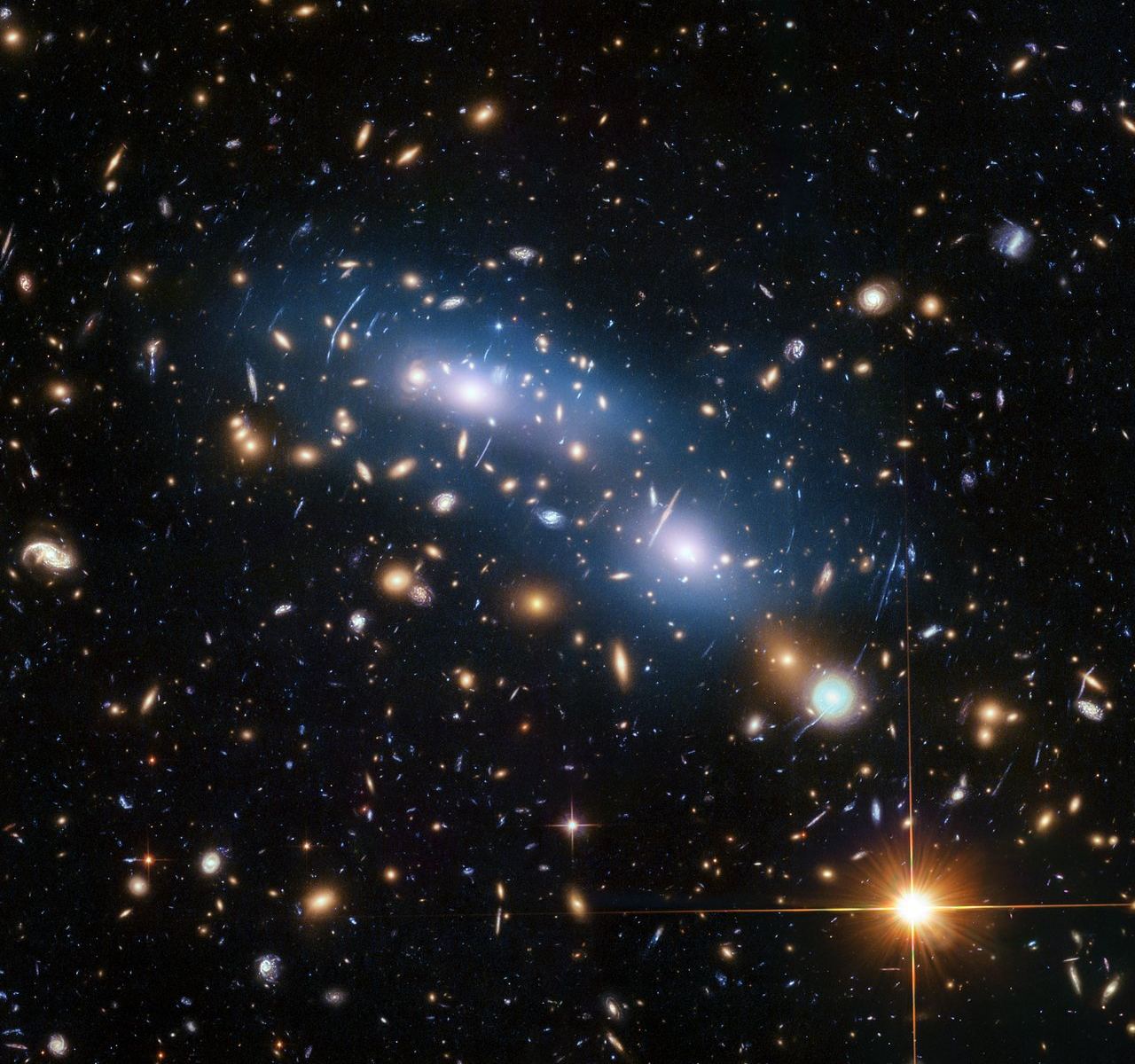Weighing the universe is a tricky task, but a team of astronomers have used a clever technique to measure how many galaxy clusters are in the cosmos, and from there come up with a total amount of matter. The answer: 31.5±1.3% of all the energy in the universe.
Galaxy clusters are the largest gravitationally-bound objects in the universe, typically hosting over a thousand galaxies and weighing in at over a quadrillion times the mass of the sun. The “gravitationally-bound” part is crucial, since there are larger structures like superclusters, but those are not bound together by their own gravity – they’re still forming (and may not ever completely form, but that’s a different story).
Since the galaxy clusters are gravitationally bound, they are stable. Once they form they persist for billions of years. And since they first assembled in the early days of our cosmos, their properties are highly sensitive to the overall ingredients and evolution of our universe.
For example, if you change how much matter is in the universe (or what that matter is made of), or you fiddle with how much dark energy is laying around, you change the growth of structures over cosmic time, and you end up changing the overall number and sizes of the largest clusters.
It sounds simple: to understand the ingredients of the universe, go forth, do astronomy, and weigh as many galaxy clusters as you can. Then run a bunch of computer simulations, adjusting the amount of matter (both of the dark and normal varieties), and compare with what you see. Whatever best matches gives you the recipe for the universe.
In practice, it’s much harder. The computer simulations tell us mainly about the evolution of dark matter (which makes up the bulk of matter in the universe), while observations are anchored on what we can see, which is the member galaxies in a cluster.
To combat this, a team of researchers developed a new analysis algorithm that helped them isolate galaxy clusters in observational surveys, determining which galaxies are members of the clusters and which are just interlopers. Employing this technique to identify 1800 galaxy clusters in the Sloan Digital Sky Survey, the astronomers then used the galaxy motions to determine the cluster mass (the faster the average speed of the member galaxies, the more massive the cluster must be, otherwise it would tear itself apart).
From there, they took this galaxy cluster census, combined it with other cosmological datasets like the cosmic microwave background, and compared to computer simulations.
The end result is a surprisingly sharp answer: matter makes up 31.5±1.3% of all the energy density in the cosmos, with the remainder going to dark energy.
It’s a dark universe out there, but we can still see it.


I have a problem with following the word “exactly” with a stated uncertainty… ?
It means the stated 1 sigma range should fence in the exact value (at 99 % likelihood if you use the 3 sigma range).